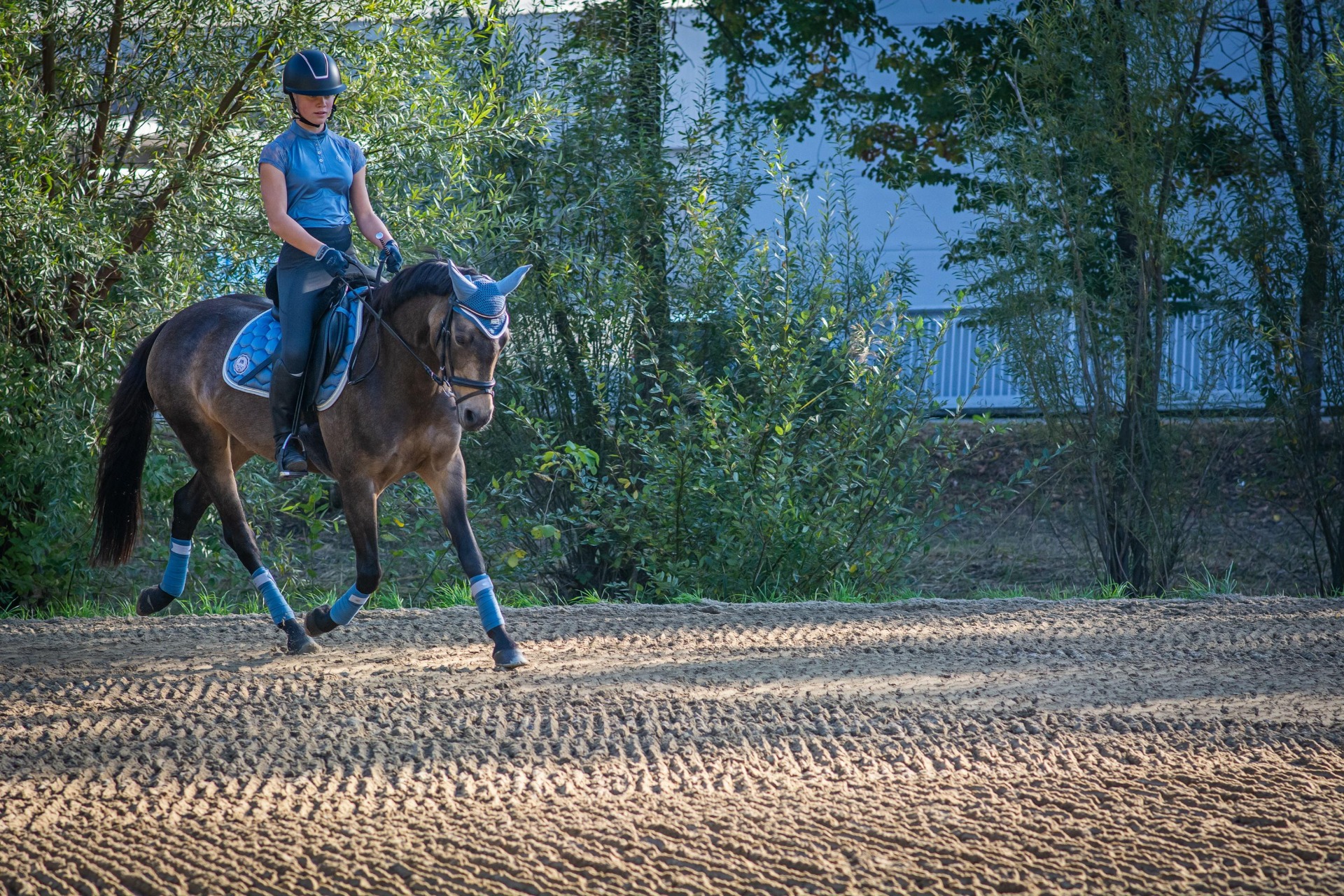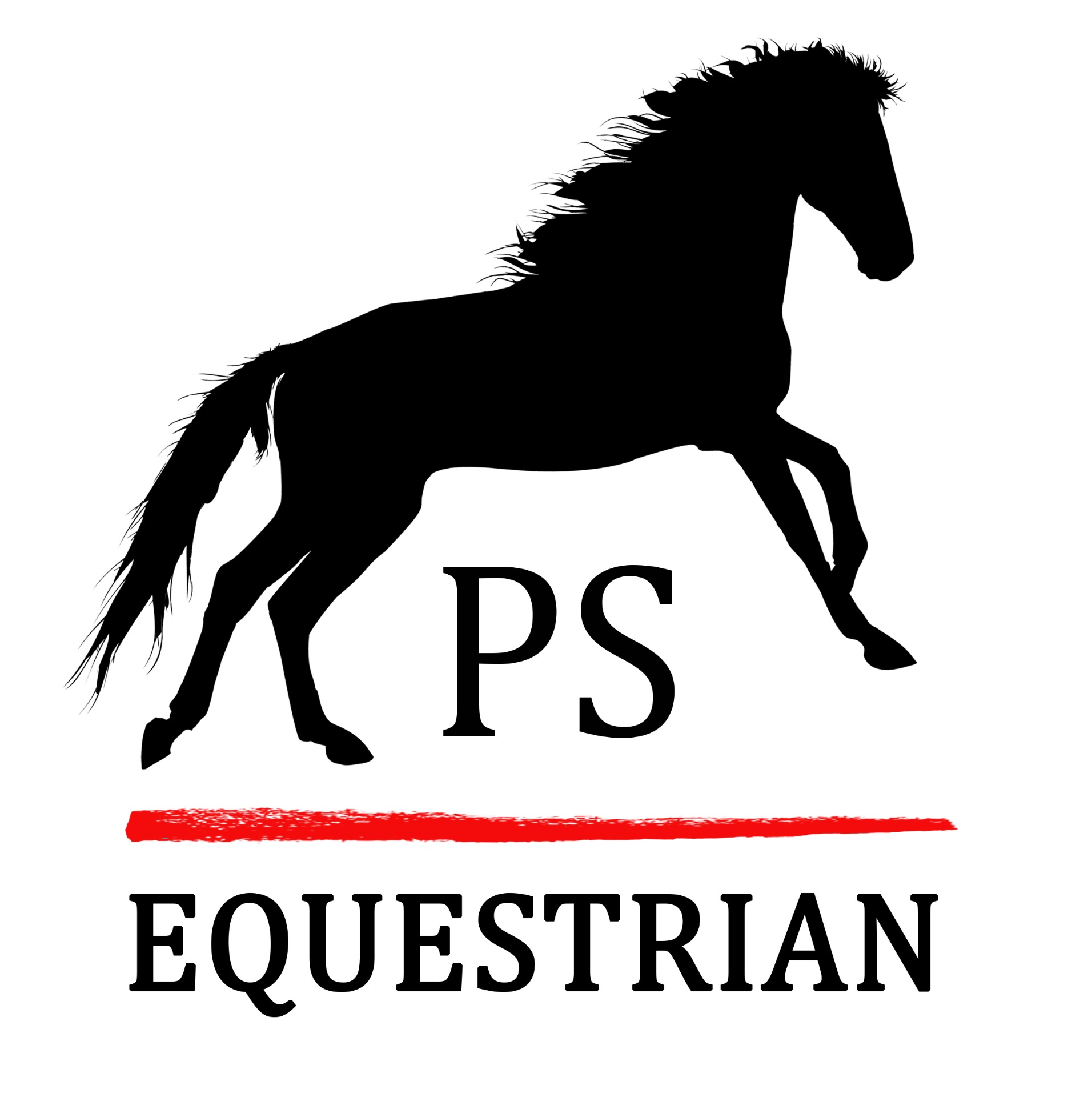What Is a Judge Looking for in a Medium Dressage Test?
07/27/2023

What’s required at Medium dressage level?
We all compete for different reasons; for some it’s a benchmark against their training stages, others its to progress up the dressage ladder; for many its something they can enjoy, and achieve, with their ponies and horses.
Today, I’m not going to analyse the dressage test from the view of an official dressage judge, but from my view as an instructor and to help you understand some of the comments you may have read on your dressage sheet at Medium level.
The aim of dressage and its movements
There are 11 dressage test levels, starting from Introductory, which only involves the two paces of walk and trot, going all the way up to Grand Prix. Each level requires more from the horse and rider in terms of balance, rhythm, lightness, self-carriage and developing the horse’s natural movements. What the dressage judge looks for when you’re riding a test also becomes more demanding as you move up the levels.
At every level of dressage, the judge will use the Scales of Training to assess each movement in the test that you and your horse perform. The aim of dressage training and competition through the levels is to develop the horse’s ability to perform the movements and their way of going.
So, what is a judge looking for in a dressage test, particularly at Medium level?

The Scales of Training
At each dressage competition level, the judge will consider to what extent the horse has developed through the Scales of Training, which are:
Rhythm
Suppleness
Contact
Impulsion
Straightness, and
Collection
As you progress upwards, there are four basic qualities that are connected and work together – rhythm, suppleness, balance and relaxation. Through the early dressage levels, like Introductory and Preliminary, it will be difficult to bring them all together at once purely because the horse won’t have developed the muscle structure and understanding. You may find that rhythm and balance don’t always work together, relaxation comes with time and confidence, while suppleness is built with strength and training.
What’s required at Medium dressage level?
It can often feel a big step upwards when venturing into competing at Medium level. This is because the judge is not only looking for the four basic qualities mentioned above, but horses are now required to demonstrate collection and perform lateral movements.
They will be expecting the horse and rider to have developed the important foundations of good equitation in line with classical dressage training principles, as well as incorporating natural equitation systems. The more demanding lateral work that’s expected at this level of dressage is an extension of the leg yield that is developed through Elementary level.
At this point, the judge is also looking for more controlled but natural engagement from the horse’s hind quarters. You may well have seen the terms ‘self-carriage’ or ‘carrying themselves’ and this is established by the horse using their core and engaging the quarters, with their hocks more underneath them, so they can carry their own weight and movement.
This allows you to clearly demonstrate marked differences in tempo, within a pace, such as showing extension and collection within the three paces. The four basic qualities – rhythm, suppleness, balance and relaxation – now incorporate impulsion, collection, straightness and contact from the Scales of Training.
What does the judge look for at Medium level?
So, at Medium level, the judge is looking to see that the horse has developed the necessary level of rhythm, balance, suppleness and impulsion to be able to extend and collect themselves in all paces. The movements should be light, i.e. they are developing self-carriage, and uphill to demonstrate cadence and greater quality through better engagement. But it isn’t just how accomplished the horse is in performing the movements. The judge is also looking for the correct amount of bend but not being overbent in any direction, and accuracy.
In fact, no matter which level you’re competing at, accuracy is always an important aspect of test riding to be taken into account. For example, riding into the corners gives you one or two extra strides into the long or short side of arena, thereby improving straightness. Making sure your circles are of the correct size and shape will help to improve the horse’s bend and suppleness through its body, and put you in the right place for the next movement.

Top tips to better dressage test riding
Now you’ve got a better idea of the Scales of Training and what judges are looking for when you’re riding a dressage test, here are my top tips to help you improve your riding skills and technique, as well as developing that ‘feel’ and connection between you and your horse when you ride.
● Make sure you’ve learnt the dressage test well
As well as knowing each individual movement, which markers they start and finish at, and the pace, consider the basics required. Modern test sheets will show you a set of directives to work towards for each movement.
● Make lightness a priority
Work towards better hind quarter engagement and encourage the horse to use their core to create that all-important lightness and self-carriage judges are looking for.
● Video, observe and develop feeling
Perfection is almost impossible to achieve with horses and dressage riding. However, you can aim for excellence but to do that takes practice. Get someone to video your training sessions to review later, have an instructor or horsey person on the ground – you get a completely different picture of how your horse is going when you’re riding. Take on board the judge’s comments and work on improving each area.
It’s a good idea to be working at a level slightly higher than you’re working on at home. So, when competing at Medium level, work on developing flying changes and 8m circles (this size circle as well as 6m circles are called volte).
● Relax and enjoy it!
If it’s too much of a chore, you can’t enjoy the art of dressage riding. Relaxation is a key factor in both you and your horse enjoying the work. Indeed, the more relaxed you are the more your horse is going to pick that up and respond. Don’t forget to smile, too!
Riding and competing at dressage through the levels is a constant learning process. Whether you’ve been riding tests for years and seem to have hit a plateau or you’re just starting to rise up through the levels, I hope the above has given you some good ideas on how you can progress through Medium level dressage and beyond.

